#coreopsis tripteris
Photo


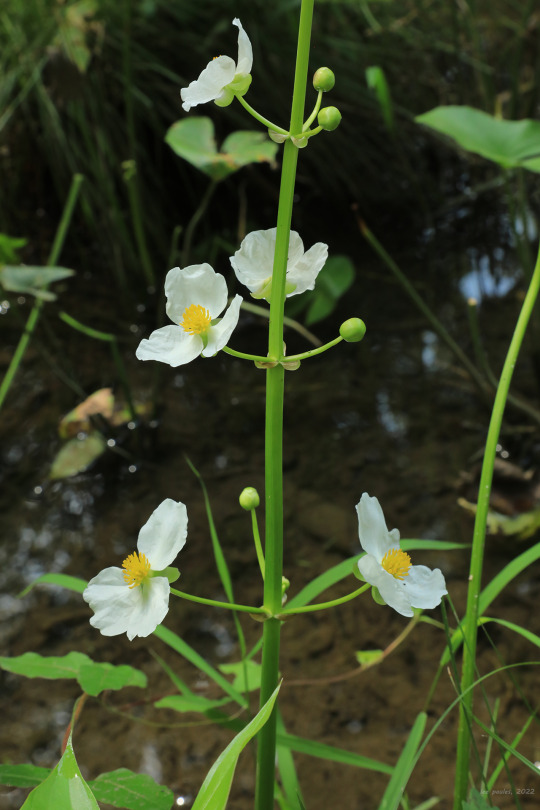

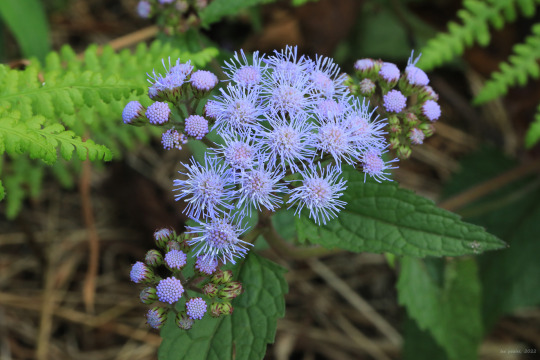



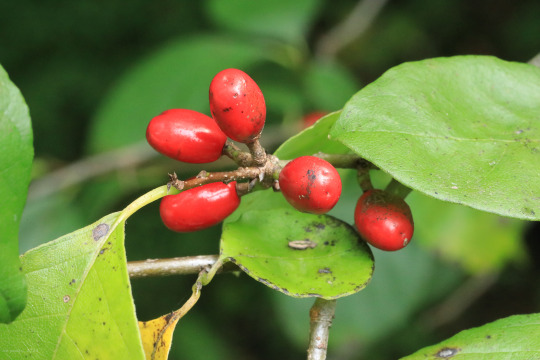
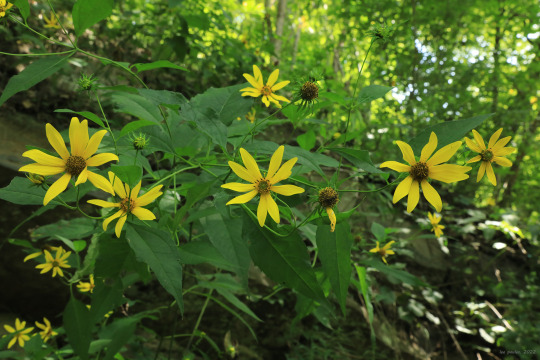
Photos from a late summer bike ride on the Mon River Trail. With autumn just around the corner, the climatic, life-sustaining ceremonies of the season have taken on a frantic, bittersweet urgency, from the proliferation of late summer blooms to the frantic chirrups of insects in search of mates before they succumb to the first frost of October. As the deep greens of summer fade and begin to sacrifice themselves to a fiery self-immolation, I salute Nature’s relentless push to plant the seeds of next year’s renewal.
From top: broadleaf arrowhead (Sagittaria latifolia), also known as duck-potato and wapato, an attractive aquatic plant whose edible tuber was an important source of starch for Native Americans; great blue lobelia (Lobelia siphilitica); a showy relative of cardinal flower with blue, split-lip flowers; blue mistflower (Conoclinium coelestinum), also known as wild ageratum and blue boneset, an unusual late summer aster with disc flowers only; tall coreopsis (Coreopsis tripteris), also known as tall tickseed, a grand, stately perennial up to 8 feet tall with distinctive tripartite leaves; a goldenrod soldier beetle (Chauliognathus pensylvanicus) navigating a wingstem flower (Verbesina alternifolia); northern spicebush (Lindera benzoin), a colonizing shrub whose luminous yellow leaves in fall contrast with its brilliant-red, aromatic berries; and pale-leaved sunflower ( Helianthus strumosus), a perennial sunflower whose leaves are mostly opposite in arrangement with long petioles and pale undersides.
#appalachia#vandalia#west virginia#mon river trail#late summer#life#renewal#flora#wildflowers#insects#sagittaria latifolia#broadleaf arrowhead#duck-potato#wapato#lobelia siphilitica#great blue lobelia#conoclinium coelestinum#blue mistflower#wild ageratum#blue boneset#coreopsis tripteris#tall coreopsis#tall tickseed#chauliognathus pensylvanicus#goldenrod soldier beetle#verbesina alternifolia#wingstem#Lindera benzoin#northern spicebush#helianthus strumosus
100 notes
·
View notes
Photo

Tall coreopsis from Rock Castle County, Kentucky. In much of the area, these are as weedy as Hollow Joe Pye, Giant Ironweed, Hoary Mountain Mint, and Spotted Phlox. Photographed from the sedge meadow near HD Meadow.
Coreopsis tripteris
21 notes
·
View notes
Photo
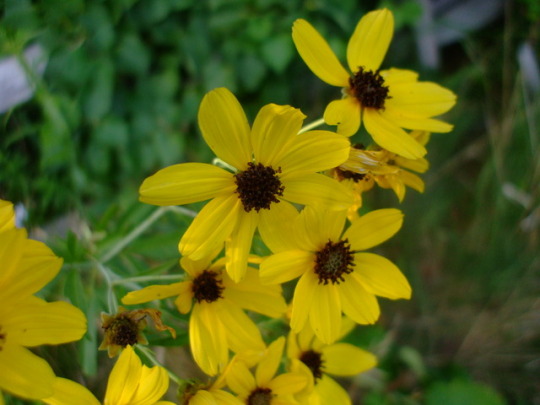
Coreopsis tripteris
#Coreopsis tripteris#wildflower#wildflowers#wild flower#wild flowers#flower#flowers#plant#plants#nature#nature photography#photography#garden#gardens#gardening
107 notes
·
View notes
Text
the audubon society plants list finally loaded kids let’s do a brief (haha) cold medicine induced analysis of what the heck they’re recommending for my local area (western PA) and whether it could grow in my shitty yard (if i’m unfamiliar with it i’m skipping it just to be fair)
It’s alphabetical by common name I guess so ok i’m doing this under a cut I supppose
Allegheny Monkey Flower (Mimulus ringens) - this plant is indeed one you see kinda often...... on the very edge of the Allegheny river literally growing as a marginal plant. not ideal unless you got a pond or live in a swamp
Allegheny Serviceberry (Amelanchier laevis) - this is one you see growing in the woods near swamps so nope, not in this drought hellscape of a yard
Alternate-Leaf Dogwood (Cornus alternifolia) - another understory moisture loving tree/shrub... next
American Beech (Fagus grandifolia) - again, moisture loving woodland tree. European Beeches are overall more drought tolerant so if you see a beech in the city or suburbs, it’s probably not an American Beech. also, in my area, you can’t find an American Beech that isn’t suffering from Beech bark disease unfortunately
American Black Elderberry (Sambucus nigra ssp. canadensis) - These are good plants and grow all along the shady woodsides here. Same issue though, they like moisture and at least partial shade. And the ornamental varieties you can find at garden centers tend to be European hybrids with fancy leaves
American Pokeweed (Phytolacca americana) - shadey woodland lad again. They’re also very very weedy idk that anyone would want this in their garden.
American Witch-Hazel (Hamamelis virginiana) - a good plant. still needs moist soil but I think would probably be ok. It looks really cool planted near grasses because it blooms in fallish
Big Bluestem (Andropogon gerardi) - finally a prairie plant!! it’s my boy big bluestem. unfortunately, it can look kinda wild and weedy for a suburban garden unless you do it right.
Black Chokeberry (Aronia melanocarpa) - handsome, good, nice berries, good fall foliage, excellent choice, prefers full sun but still likes it a bit moist and will drop all its bottom leaves and turn fall colors early if you underwater it oops i definitely never was responsible for that at work with b&b aronias.
Black Raspberry (Rubus occidentalis) - oh word we got these in our garden and the birds actually like the red ones better rip
Black-Eyed-Susan (Rudbeckia hirta) - that’s right babey it’s Susan. this baby will reseed all day in sun or shade and birds love that shit. downfall is the species plant is prone to rust and cultivars do a bit better.
Butterfly Milkweed (Asclepias tuberosa) - Good and Wholesome friend. I don’t recommend this as baby’s first milkweed though because they can be slow to establish and kinda disappointing and small and if you get caterpillars on it the first year, it may not survive.
Cardinal-Flower (Lobelia cardinalis) - my mom actually has managed to keep a Lobelia alive in the shadiest, wettest part of her garden but listen...... this is a marginal or swamp plant. Put it in the swamp.
Common Buttonbush (Cephalanthus occidentalis) - it’s the bae
Common Milkweed (Asclepias syriaca) - do not try to buy this as an established plant at a garden center, they will look at you funny and point at the roadsides. Either wait until fall seedpod time and go harvest some or buy some seeds online
Common Snowberry (Symphoricarpos albus) - I had no idea this was native actually but it’s cool because it gets big white ORBS
Common Winterberry (Ilex verticillata) - it’s got stems. it’s got berries. it can grow wherever. what more could you want??? english holly who?????
Common Yarrow (Achillea millefolium) - actually often confusingly hybridized with European Yarrows so no one knows whether they’re ~true~ natives or not. Who cares they will survive anything except a swamp. They will live in a drought ass no topsoil suburban neighborhood like a CHAMP. they were made for this.
Dense Gayfeather (Liatris spicata) - just including this one because it sounds like a Good Omens joke
Flowering Dogwood (Cornus florida) - put that baby tree back in the moist woodlands where it came from or so help me
Gray-Head Mexican-Hat (Ratibida pinnata) - ayyy prairie plant, though this isn’t the species you commonly see for sale at garden centers and this one is decidedly less phallic than R. columnifera so that’s a bummer.
Great Blue Lobelia (Lobelia siphilitica) - we half killed this at work because it doesn’t love pot culture or me but someone still bought it all. don’t put this in your dry ass suburban neighborhood or she will hate you too
Northern Bayberry (Morella pensylvanica) - i call this myrica pensylvanica but whatever. birds love it. so do japanese beetles unfortunately
Pennsylvania Sedge (Carex pensylvanica) - it’s a sedge
Red Columbine (Aquilegia canadensis) - unlike other columbine, this bitch likes full sun and probably will grow and reseed anywhere
Redbud (Cercis canadensis) - another understory-ish moisture loving tree but a lot of the cultivars do just fine in the middle of sad suburban yards. also good. blooms wherever it wants while nakey.
Scarlet Beebalm (Monarda didyma) - you will only ever find cultivars of this but who knows, they may slightly more mildew resistant for at least a little while
Shag-Bark Hickory (Carya ovata) - big, handsome, looks like it’s seconds away from falling apart at all times. just how i like my men.
Smooth Oxeye (Heliopsis helianthoides) - please let the one in my mom’s yard know that it’s meant to survive dry soils in full sun
Spotted Beebalm (Monarda punctata) - my favorite bee balm but doesn’t have the Wow factor of M. didyma cultivars. It likes the sun and dry though
Spotted Touch-Me-Not (Impatiens capensis) - wholesome friend! But no one in their right mind would plant this on purpose in their garden also it would be wilt-city out here in the drought ass topsoil-less surburbs. these babies used to grow between the greenhouses and I used to water them like some kinda of bleeding heart
Swamp Milkweed (Asclepias incarnata) - she can actually live pretty well in the middle of drought ass suburban yard and spreads easily by seed but expect half the lower leaves to yellow and drop off by midsummer. poor darling. put her back in the swamp. This is the most reliable commerically available milkweed you will find because it takes to pot culture way better than other milkweeds (rip all the butterfly weed horticulture land kills yearly)
Sweet-Bay (Magnolia virginiana) - more like sweet bae am I right???? actually she wouldn’t live in my yard. needs some afternoon shade and moist, rich soil.
Sweet-Scented Joe-Pye-Weed (Eutrochium purpureum) - It’s Joe!!!!! Will grow all over. Will get 7 feet tall with massive flowers just because he can. Will grow in a swamp, will grow on a hillside, will grow beside Wal-Mart. Joe don’t care. I still call it Eupatorium because I resist change and actually I’m not 100% sure if this or E. fistulosum that is most common around here.
Tall Tickseed (Coreopsis tripteris) - coreopsis is a really popular genus to see on native plant lists but there aren’t many native to my area of Pennsylvania and you won’t find anything but C. verticillata or C. lanceolata cultivars in garden centers. BUt apparently this bitch can get NINE FEET TALL i’m swooning
Trumpet-Creeper (Campsis radicans) - ok, i’d avoid planting this baby unless you know exactly what you’re doing. she may be native but she can and will do her best to eat your home and foundation and your garden in general. she will do her rhizomey best to runner away from you into the wilderness. fun to grow across a pergola though but she will EAT your TREES and your HOME
Virginia-Creeper (Parthenocissus quinquefolia) - ????? no one is going to deliberately plant this, Audubon Society
Wand Panic Grass (Panicum virgatum) - this is why I think making these lists with common name first is so hilarious because what????? I know this as “Switchgrass” which sounds nice and normal wtf is a Wand Panic Grass. that’s what i’m going to call bad bottom dysphoria episodes from now on
White Turtlehead (Chelone glabra) - likes it wet and shaded so wouldn’t do nice in my yard. also why even BOTHER planting this plant unless you’re going to do the cultivar ‘Hot Lips’ (jk probably the white one is more native insects friendly)
Wild Hydrangea (Hydrangea arborescens) - she’s cute and all but if you want a Hydrangea just go full cliche H. paniculata cultivar or nothing. This plant would hate my whole entire yard and then die
anyway, that’s all the plants on the list I felt like rambling about on this fine Tuesday morning. Overall, idk how helpful a list like this would be for first time gardeners, because they would run into the issue of not being able to actually their hands on most of these plants.
Very few on the list would actually be suitable for growing in a new suburban neighborhood or an urban garden. This is an area naturally full of sensitive, woodland, rich, moist soil-loving plants... and unfortunately, those areas are disappearing more and more under new developments and the native pollinators and wildlife are going along with them.
#i really just did that and rambled about a whole lot of plants for no good reason#long post#idk what to tag this as
19 notes
·
View notes
Photo
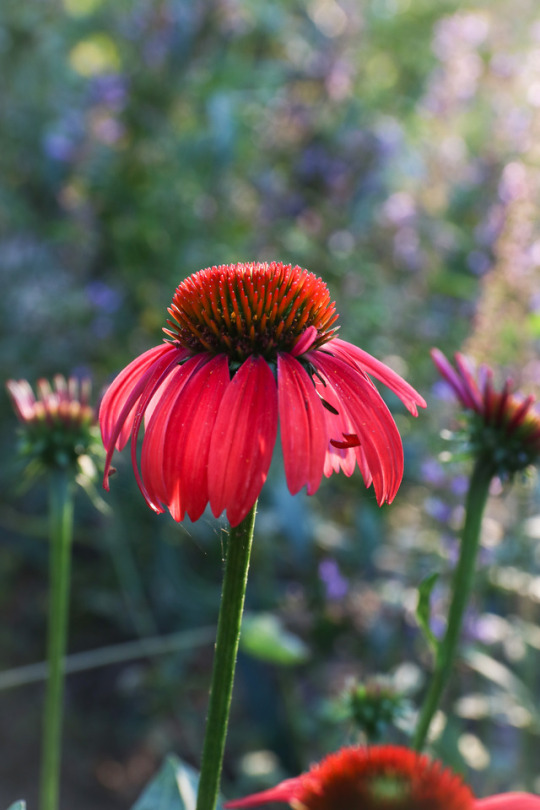



And they keep on flowering . . . Cheyenne Spirit Echinacea with Coreopsis tripteris just coming into bloom.
Late August - Catharpin, Virginia
25 notes
·
View notes
Link
For just $3.49 Tall Tickseed Duration: Perennial Bloom Time: Summer-Fall Height: 72-84 inches Spacing: 15-18 inches Light: Full Sun to Part Shade Soil Moisture: Medium USDA Zone: 3a-8b Produces narrow blade-shaped green foliage and 2” daisy-like flowers with bright yellow petals and brown centers As its name implies, Coreopsis tripteris (Tall Coreopsis) stands quite tall reaching heights of 7' and in some cases up to 9'. Arranged in a flat-topped cluster, the flowers comprise a disk of yellow, deepening to purple-red. The leaves are divided into three lobes. Coreopsis plants love the summer sun and heat. They are fairly drought tolerant once they are well-established. They are not too picky about soil, but it does need to drain well. Deadheading helps to encourage continuous blooms up until the first frost. Coreopsis care includes leaving new fall growth at the base of the Coreopsis plant for wintering over and dividing the plant every 2 - 3 years. Directly sow Coreopsis flower seed outdoors in spring into a prepared seed bed. Soil should be loosened and weed free. Press the Coreopsis seeds into the soil but do not cover them. Keep the Coreopsis seed moist until germination. Coreopsis Early Sunrise will bloom the first year after sowing flower seed. Season: Perennial USDA Zones: 4 - 9 Height: 18 - 24 inches Bloom Season: Summer and fall Bloom Color: Yellow Environment: Full sun Soil Type: Well-drained, pH 6.2 - 7.2 Deer Resistant: Yes Temperature: 65F Average Germ Time: 14 - 28 days Light Required: Yes Depth: Do not cover the seed but press into the soil Sowing Rate: 3 - 4 seeds per plant Moisture: Keep seeds moist until germination Plant Spacing: 18 inche
0 notes
Text
Coreopsis Tripteris Care: Growing Tall Tickseed
The post Coreopsis Tripteris Care: Growing Tall Tickseed is by Kevin Espiritu and appeared first on Epic Gardening, the best urban gardening, hydroponic gardening, and aquaponic gardening blog.
Coreopsis tripteris, or tall tickseed, is a flowering perennial herb that will beautiful your low-maintenance garden.
The post Coreopsis Tripteris Care: Growing Tall Tickseed is by Kevin Espiritu and appeared first on Epic Gardening, the best urban gardening, hydroponic gardening, and aquaponic gardening blog.
Coreopsis Tripteris Care: Growing Tall Tickseed published first on https://weedkillerguide.tumblr.com/
0 notes
Photo
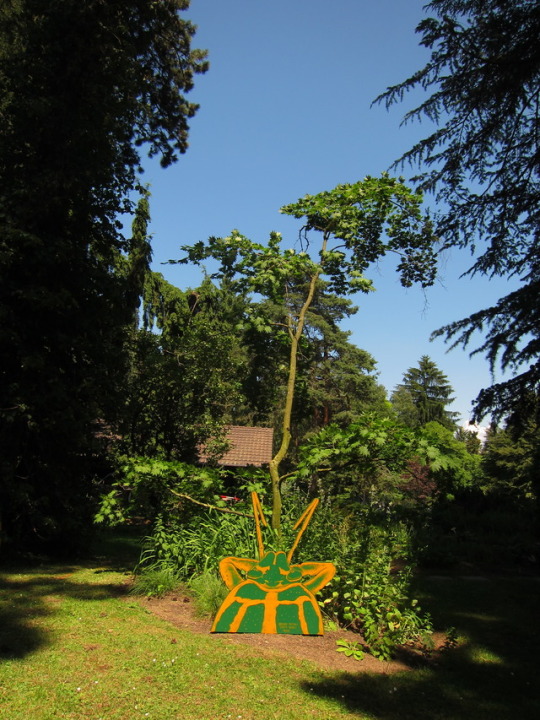

COREOPSIS TRIPTERIS L CORLOPSIS TRIFOLIOLE "BUG" AT JARDIN ALPIN MEYRIN BY STIV DUNAND
0 notes
Photo
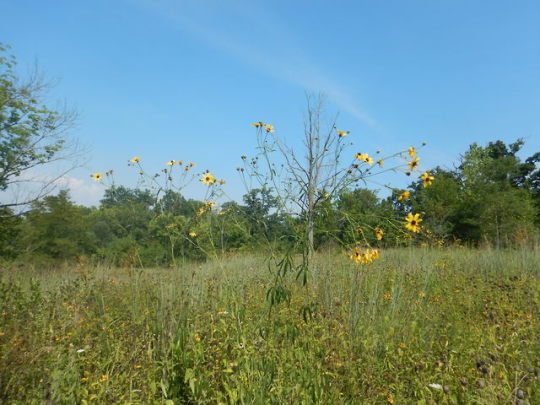
Tall coreopsis
Coreopsis tripteris
atop the Adena Mound Praire
13 notes
·
View notes
Photo


Coreopsis tripteris
A few individual tall coreopsis call the Adena Mound Prairie their home. I wish these were as ruderal as they are in some parts of Kentucky, you can tell that their genetic vigor is not what it once was and it’s sad.
6 notes
·
View notes
Photo

Coreopsis tripteris
#Coreopsis tripteris#wildflower#wild flower#wildflowers#wild flowers#flower#flowers#plant#plants#nature#nature photography#photography#garden#gardens#gardening
21 notes
·
View notes
Photo
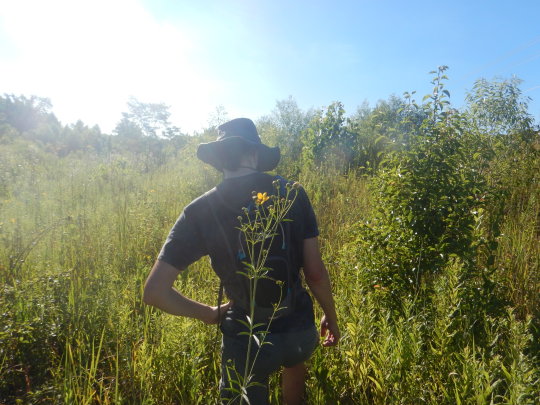
My friend William @theancient2 along a roadside remnant on Indian Creek that boarders Riley Millville road. Coreopsis tripteris was just starting to bloom. There are actually three remnants along this road. Each Remnant is not continuous but are close enough to each other to walk from one to the other. Indian Creek is a section of non broken or modified creek that enters the Great Miami. This creek is the last place in southern Ohio to have an observation of snowy evening catchfly Silene nivea. It grows only in semi open sandy alluvium deposits in our region of Ohio which is problematic due to canopy closure and honeysuckle and stilt grass invasion. Bunker Hill Pioneer Cemetery and Indian Creek Metro Park are also great locations for another Silene spp. specifically Silene virginica. Indian Creek Metro Park is known for salamander migrations, Dodecatheon medea, Camassia scilloides, Trillium recurvatum, Arisaema dracontium, Ophioglossum engelmannii, and a few rare hillside sedge populations. Sawett Owls and Red-headed woodpecker are known to visit the areas Thinning logging stands of pines(which are now no longer logged).

5 notes
·
View notes
Photo

A beetle traverses the yawning yellow rays of a tall coreopsis (Coreopsis tripteris) flower on the Mon River Trail.
#appalachia#vandalia#west virginia#flora#summer#wildflowers#asteraceae#coreopsis#tall coreopsis#tall tickseed#insect#beetle#ophraella
15 notes
·
View notes
Photo


Tall Coreopsis
Coreopsis tripteris
There are few prairie and old field plants that are yellow in late autumn that pop out more than tall coreopsis.
Photographed at Francis Recre Acres
#coreopsis tripteris#ohio#plants#botany#wildflowers#yellow#flower#plantblr#nature#prarie#prairie#yellow flower#plant#tall#science#francis recre acres#dreary
33 notes
·
View notes